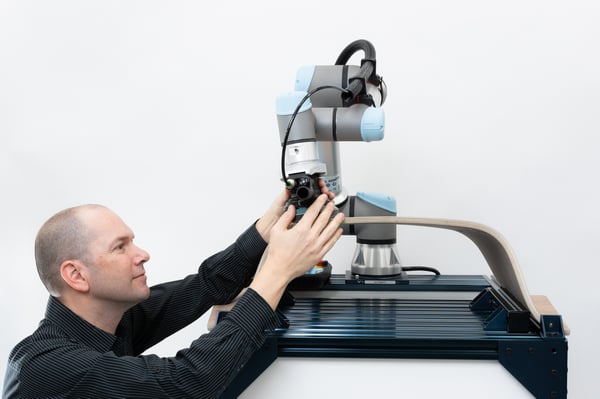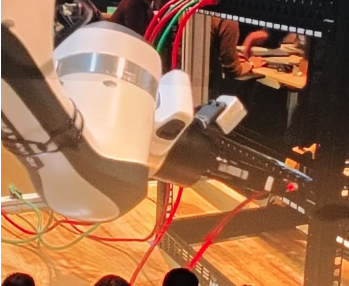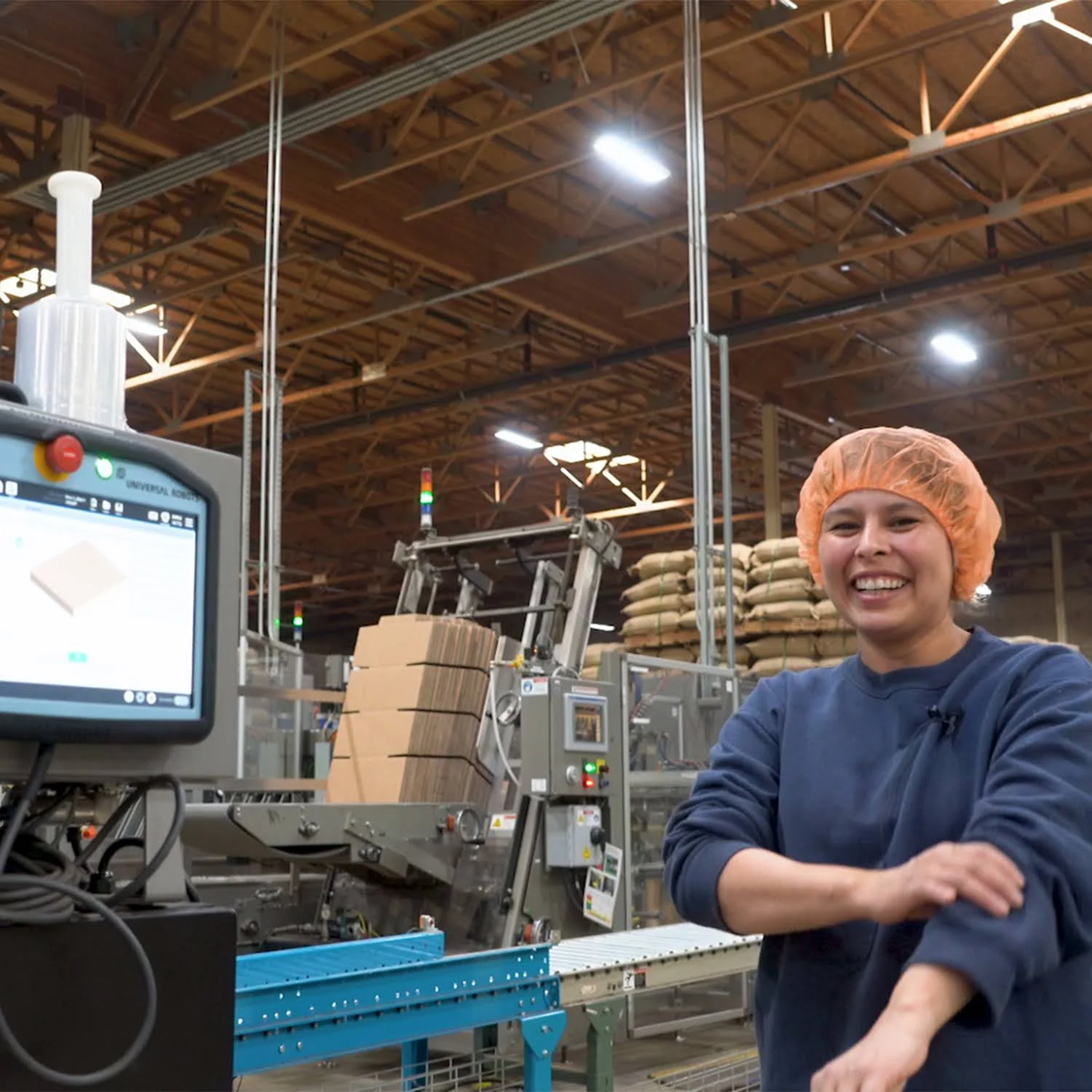The 3 Ways to Automate a Sanding Task

Posted on Apr 30, 2019 in Automation
6 min read time
What's the best way to automate a sanding task? Material removal is vital for many manufacturing processes, but it take a lot of time and effort when done manually. There are 3 main ways to automate sanding tasks.
In many manufacturing processes, sanding is one of those tasks that is absolutely vital for achieving a quality product… but also can be a nuisance. Performing sanding tasks manually takes a lot of time and effort, and can be extremely dull (one of the "3 D's of robotic-suitable tasks: dull, dirty and dangerous). What's worse, even in the hands of the most skilled sanding professional there can still be inconsistencies in the quality of the sanding.
Automation can help to improve sanding tasks by doing them faster, with less human intervention, and with much better consistency.
Does that sound good to you?
Would you like to use sanding automation in your business?
Do you have task you think could be improved by automated sanding?
Unfortunately, your decisions aren't over yet. You see, there is more than one way to automate a sanding task. Which option you choose will dramatically influence the effectiveness of your automation effort.
There are three main ways to automate sanding tasks. Let's look at the pros and cons of each.
1. Automatic sanding machines
The "powerhouse" option for sanding is automatic sanding machines. These have been around for a long time and are used in high-volume production environments.
Automatic sanding machines work in the following way:
- Abrasive material is continually moving within the machine, usually either fed on rollers or spinning drums, disks, or wheels.
- The workpiece thickness and sanding depth is programmed into the machine, which then automatically sets the height of the abrasive material.
- The machine feeds the workpiece past the abrasive material at a constant rate.
There are a range of different types of automatic sanding machine, depending on the needs of the task including:
- Belt sanding machines — (e.g this video) — These use long belts of abrasive material which run through the machine on rollers.
- Brush sanding machines — (e.g. this video) — These use a series of large spinning brushes with abrasive bristles.
- Orbital sanding machines — (e.g. this video) — These are Cartesian robotic mechanisms with an orbital attachment which holds the sanding paper.
The pros and cons of automatic sanding machines
Automatic sanding machines are certainly a reliable option in large-scale production environments. However, there are some advantages and disadvantages to using them.
Advantages include:
- They are good for high volume production where sanding operations are required constantly as part of a largely automated production line.
- They can achieve very high material removal rates, especially with belt sanding.
- They are well suited to specific finishing tasks.
Disadvantages include:
- They are inflexible as each machine is only suited to a specific size and shape of workpiece.
- They are very costly.
- They take up a lot of space on the workfloor and make a lot of noise.
2. Industrial robot sanding
A more flexible solution is to use industrial robots for the sanding task. These are able to handle a more varied selection of workpiece sizes and shapes.
There are two ways to achieve industrial robot sanding.
- A force sensor and sanding attachment (usually an orbital sander) are connected to the end of the industrial robot arm. The robot moves to the surface of the material and uses force control to apply a constant force onto the workpiece as it moves over the surface.
- A force sensor and gripper are connected to the end of the industrial robot arm. The robot holds the workpiece and pushes it into a static sanding machine, applying a constant force.
The programming of industrial robot sanding can be quite complex because it requires force control. It can also take a long time to program the waypoints for these tasks, especially when sanding over curved surfaces.
The pros and cons of industrial robot sanding
Industrial robot sanding removes some of the inflexibility which is inherent in automatic sanding machines. However, they also have their advantages and disadvantages.
Advantages include:
- A single robot is suitable to a much wider range of sanding tasks than automatic sanding machines.
- Industrial robots have a large workspace.
- As with all robots, they are reprogrammable so can handle many different workpieces.
Disadvantages include:
- Industrial robots tend to be very large and take up a lot of space.
- They are still a costly option.
- Industrial robots require a lot of extra safety precautions, which makes them take up even more space on the workfloor.
3. Collaborative robot sanding
The final option is collaborative robot sanding. As the name suggests, this involves using a collaborative robot instead of an industrial robot.
Many people believe that collaborative robots are not suitable to tasks like sanding. However, this is not true and one of our newest additions to the Robotiq family of solutions is testament to that — our Sanding Kit for UR robots now makes it easier than ever to automate your sanding task.
 Program a complete trajectory in minutes with Robotiq's Finishing Copilot
Program a complete trajectory in minutes with Robotiq's Finishing Copilot
Collaborative robot sanding can use both of the two methods that we introduced when we were talking about industrial robot sanding:
- Using the specially made orbital sanding tool.
- Holding the workpiece and pushing it into a sanding machine.
However, unlike with industrial robots, collaborative robots are much easier to program for sanding tasks. With our Sanding Kit, you can program a sanding operation in a matter of a few minutes (even for curved surfaces) instead of the hours it could take with an industrial robot. You can even program the robot with hand guiding via the ActiveDrive.
The pros and cons of collaborative robots sanding
Collaborative robots bring the power of automated sanding into the hands of anyone who wants to use it, without all the cost, size, and complexity of the previous options. Of course, they still have a few advantages and disadvantages.
Advantages include:
- They are very to use and program, with programs only taking a few minutes to write.
- Collaborative robots are extremely flexible. You can literally roll them over to another area in the workshop and program them for a new task in minutes.
- They usually do not require any extra safety precautions.
Disadvantages include:
- They are not as fast as dedicated automatic sanding machines.
- They are more suited to low-removal sanding operations, such as finishing.
- They are not best suited to high-volume, large scale production.
Ultimately, the best option for your sanding application will depend on the specific needs of your task. However, now that you have an understanding of the three main options for automated sanding you can make the best choice for you!
Which option sounds best for your application? Tell us in the comments below or join the discussion on LinkedIn, Twitter, Facebook or the DoF professional robotics community.






Leave a comment